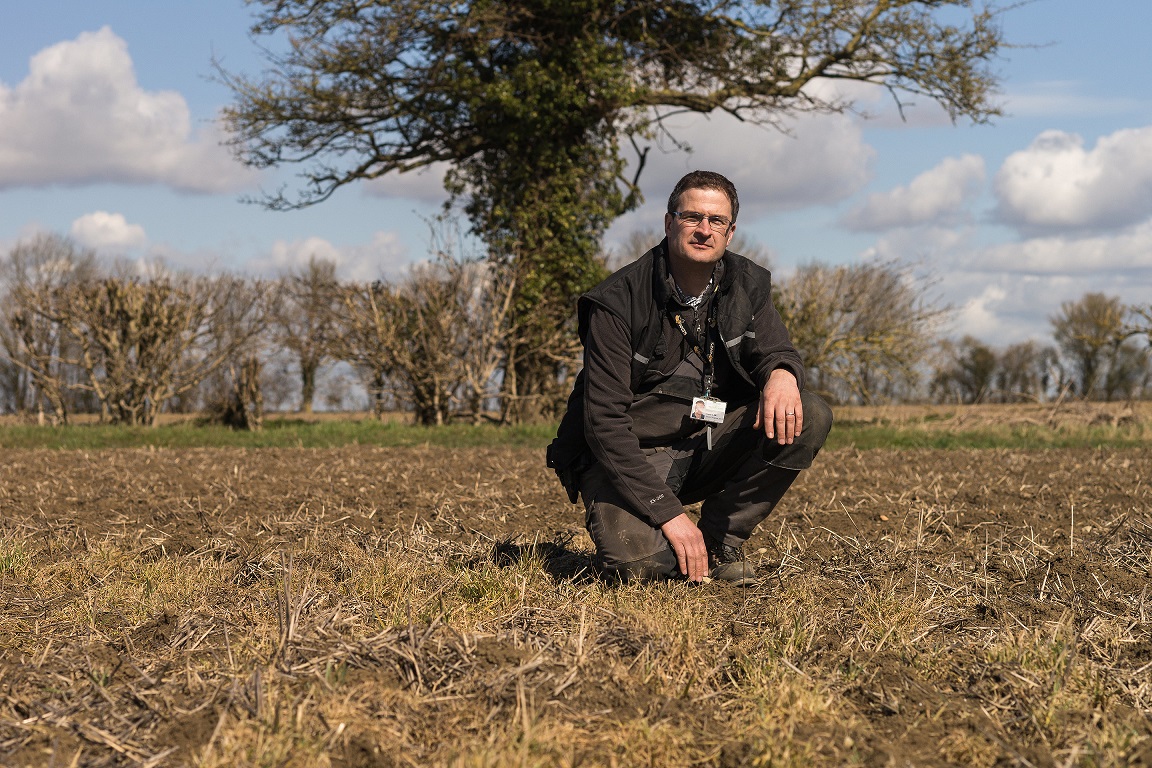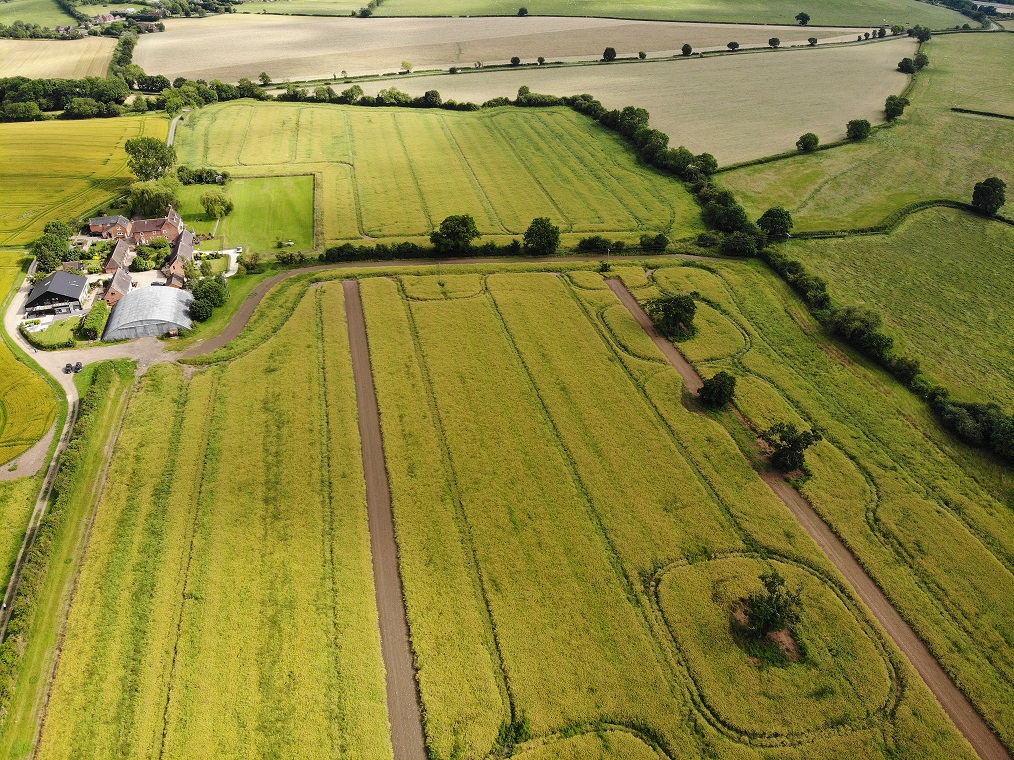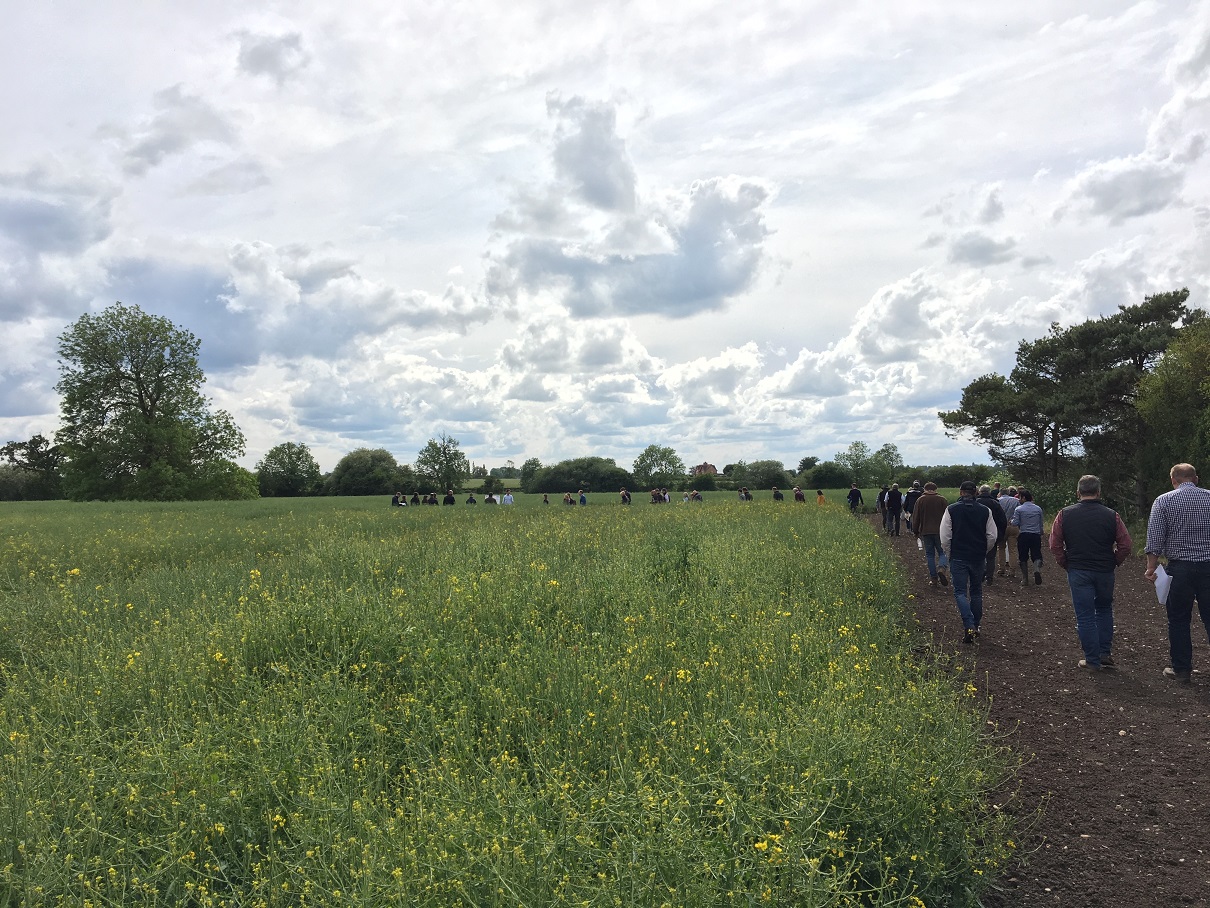Measuring the impact of environmentally-responsible farming
Monday, 1 July 2019
Rob Fox of Squab Hall Farm, Leamington, is trying to find practical approaches to reduce the environmental impact of farming, while maintaining productivity.

He hosts an AHDB Strategic Cereal Farm and as part of the scheme, he’s running some farm try-outs under the ASSIST project, organised by the Centre for Ecology and Hydrology (CEH).
Rob said: “As farmers, we have a responsibility to the environment and wildlife. It’s high up on the agenda, not just because of what we should be seen to be doing, but also because it’s important.”
Rob has selected three oilseed rape fields and applied a unique treatment to each one. They range from a standard approach (control) to a sophisticated approach designed to boost soil health and wildlife. The treatments are:
- Business as usual (control)
- Cover crops and flower margins
- Cover crops, manure or compost at 30t/ha, flower margins and in-field flower strips

The in-field flower strips, flower-rich grass margins which encourage invertebrates into the field, will be left in place for five years.
Although Rob admitted that the strips could be difficult to establish, he said that using GPS helped him to off-set the tramlines.
“Of course there are going to be difficulties with things like this, but it will benefit us, the farm and the wildlife,” Rob said.

In-field pollinator strips sown at Squab Hall

A field walk around the ASSIST field demonstrations at the Strategic Farm open day in June 2019
With the help of the ASSIST programme and the Strategic Farm, Rob hopes to be able to quantify in detail the benefits of these activities, something which hasn’t really been done before.
The measurements include:
- Spatial variation in crop yield (both from yield mapping and hand sampling)
- Weed, pest and disease pressure
- Soil nutrient pools and carbon stocks
- Soil microbial activity and functional enzymes
- Abundance and diversity of beneficial species
- eDNA assessment of the diet of natural enemies to determine the key predator species
- Direct measures of pest control effectiveness using sentinel pest species and other baits
- Wider benefits to biodiversity, including farmland birds and butterflies
You can find out how the field try-outs fared in their first year at the Strategic Cereal Farm results day on 27 November at Leamington Spa Football Club.
Treatment details
- Field margins: 6 m wide, at least run the length of the two longest sides of a field
- In-field strips: 6 m wide, run though the centre of fields separated by three boom widths. The strips do not need to connect to the headland
- Seed mix: 4kg/ha wild flowers and 10kg/ha grasses. Species chosen to provide refuge habitats and flower resources.
- Establishment and maintenance: sown broadcast and roll, July - August into a firm, fine, weed-free seedbed. If annual weed pressure is high, three or more cuts might be needed.

